- Home
- Diane Fanning
Written in Blood Page 3
Written in Blood Read online
Page 3
At Cornell University in Ithaca, New York, sophomore Caitlin Atwater, Kathleen’s only biological child, was out to brunch with a friend when the call came from Durham. She returned to her sorority house and found a note from the sorority president asking her to come see her right away.
When Caitlin entered the president’s room, Becca, Caitlin’s roommate and best friend, was there, too. Becca’s tear-stained face alarmed her. She was certain her friend was in trouble and asked what was wrong.
Becca said, “Caitlin, it’s fine. It’s fine. Someone is coming to talk to you in a minute.”
Caitlin was not letting Becca off the hook. She looked her in the eye and said, “Becca, you can’t do this to me. You’ve got to tell me what happened.”
“Caitlin, it’s your mother,” Becca said. “She’s dead.” Becca had spent time with Kathleen on four different occasions. She had some sense of the devastating loss Caitlin felt.
Caitlin found it difficult to comprehend those simple tragic words. The only other loss she had experienced in her life was the death of her great-grandfather. And he lived to the respectable age of 104. Her mother was only in her 40s. It was impossible that she was gone.
Grief counselors arrived to minister to Caitlin. The grieving girl was too numb to feel their words of compassion. All night long, a procession of sorority sisters paraded in and out of Caitlin’s room. They brought offerings of stuffed animals and ice cream, both to comfort Caitlin and to stave off their own feelings of helplessness.
Fred Atwater, Kathleen’s ex-husband and Caitlin’s father, was consulting on a job in Philadelphia. He spent the weekend at home in North Carolina and just arrived back for the work week when he got the news.
He drove to Ithaca to be with his daughter. The next day, they would drive back to Philly and then fly together to face the horror of Durham.
5
Dan George looked over the stairway for any other evidence. Using tweezers, he extracted hair, fibers, Christmas tree needles and samples of wood. While he gathered the minute traces of evidence, Lieutenant Holland and his team spread out over the house looking for any possible weapon. They searched upstairs, downstairs, in the garage and up in the attic, and performed a cursory search around the perimeter of the house.
George loaded the accumulated evidence into his car and took it to the station. For some reason even he cannot explain, he did not seize the towels that rested beneath Kathleen’s head, the eyeglasses in the stairway or the telephone with its telltale spot of red.
In the locked, secured evidence room, he rolled out a clean white sheet of paper and laid out all the clothing. He hung each article on a separate hanger and put it in the evidence drying cabinet.
It was now 2 P.M. Dan George had been on duty since 5 P.M. the previous day. After twenty-one hours, he was exhausted. He went home and slept for four hours before returning to Cedar Street.
At the medical examiner’s office, Dr. Deborah Radisch, forensic pathologist, received a call from Dr. Kenneth Snell early Sunday morning informing her that he was on the way to a scene that would probably require an autopsy. She prepared to perform another one of the 3,200 autopsies she had conducted in her career.
Snell arrived at the office before the body did. He ran down the details of the death scene and showed Radisch the Polaroids he had taken.
When Kathleen’s body arrived, Radisch removed the clothing and submitted it as evidence. She weighed her—120 pounds—and measured her: 5’2”. She scanned the body for scars, marks and injuries that could have been involved in the death.
On Kathleen’s face, the pathologist found three small bruises in a line pattern over the right eyelid and three scratches on a diagonal over the right eyebrow. Those injuries could not be the result of impact with a flat surface—like a stair step—since they were in locations on the face protected by surrounding bone. Only prominent areas of the face—like the nose, the cheekbones and the chin—would be injured in a fall.
She noted a small area of damaged skin and a faint bruise on the forehead. There were other marks on Kathleen’s face most likely caused by fingernails. Radisch located bruises on the earlobe and nose caused by blunt trauma—either by falling against a step or by being impacted with force into a step.
She found no damage inside the mouth. There was a chip off of one tooth, but it was not possible to determine if it was recent in origin.
Radisch shaved Kathleen’s head to better view the injuries there. She discovered seven areas of wounds on the head—many spanned the full thickness from the scalp through to the skull. There was a lot of bleeding into scalp tissue around these wounds. One of them created a flap of skin—or avulsion—that could be lifted up, enabling Radisch to see the skull beneath. Another was a tri-pronged cut—looking as if a small, sharp rake had dug three inches along the scalp. Each cut was caused by at least one individual impact. In Radisch’s opinion, the injuries were the result of being struck by an object or against an object and were inconsistent with a fall.
Turning to Kathleen’s hands, Radisch found hairs grasped in each one. She removed them and packaged the samples as evidence. She scraped dried blood from beneath the fingernails, but found no tissue. Frazier fir needles were stuck in the blood on the hands. On the left hand, there were two injuries and some bruising. Another bruise was on the back of the right hand. Around the wrists and elbows were more bruises.
In the doctor’s opinion, these external injuries on the arms and hands were most consistent with those received when someone is trying to fend off attack. They appeared to be defensive injuries caused by separate impacts.
After she was certain she had observed and documented all relevant characteristics on the outside of the body, the doctor made a Y-incision to the trunk and began the internal examination. First, she viewed all of the organs in place. She looked closely for any disease process in the body cavity and found none.
She drew an aorta blood sample and took toxicology samples. She then cut the scalp with a Stryker saw and found a large amount of hemorrhage, but no fractures to the skull. She removed the top of the skull and turned her attention to the brain, where she found a small amount of sub-arachnoid hemorrhage. She removed the brain, weighed it and fixed it in formalin for future neuropathology review.
She moved her examination to the internal neck area, and discovered a bloodied fracture with hemorrhage on the small extension off of the left thyroid cartilage. It was an injury unlikely to occur in a fall. Usually it was the result of direct trauma to the bone and was common in strangulation or attempted strangulation.
She encountered no visible blood in the airway. She found no evidence that Kathleen had aspirated—breathed—blood into her lungs. She also did not find any evidence of expelled blood. The blood alcohol level was .07—three-tenths of a point below the legal definition of intoxication in North Carolina at the time.
When she submitted the final report, Dr. Radisch determined that the cause of death was blunt force trauma to the head. The manner of death was homicide.
Angela Powell left the medical examiner’s office and returned to headquarters at 2:10 P.M. She turned in the evidence obtained during autopsy: a tube with blood; fingerprints; footprints; hair samples—some from Kathleen’s scalp as well as the hair found in both of her hands; a small wood/metal chip found on the back of her head; a DNA card; and the sweatpants and sweatshirt Kathleen had been wearing when she died.
When Durham Police Department blood spatter expert Rebecca Reed saw the large quantity of blood and the multiplicity of stain types, she determined that the scene exceeded her ability to analyze. Someone with more knowledge and experience was needed. A call was made to the North Carolina Bureau of Investigation. In one hour, Agent Duane Deaver from the environmental crimes unit was on the scene.
Deaver was not just any blood spatter analyst; he was the SBI’s lead instructor on bloodstain evidence, teaching police officers, prosecutors and pathologists all over the state. He had test
ified as an expert in the courtroom for more than sixty trials.
He walked through the scene observing the blood transfer stain on the inside of the door, the barefoot print transfer close to the door and the stain on the sofa where Todd directed Mike to sit after he removed him from the stairwell.
Deaver went back to his car for the equipment he would need. He returned in a Tyvek suit and booties to begin his general examination of the stairway. Although the blood was dried by now, the musty, acrid scent lingered and filled the air with an olfactory scream of death.
Deaver sketched a diagram of the area, including the stains on the walls, on the steps, on the risers, at the base of the stairs, on and behind the chair lift and on the trim and header panel above the entrance to the kitchen area. He noted impact spatter, cast-off patterns, transfer patterns and blood smears—some the result of attempted cleanup.
It was this cleanup that surprised the SBI agent the most. Many times, there are no indications that anyone tried to sanitize the scene. In most cases, when they do, the cleanup by the perpetrator is thorough. He expected this typical all-or-nothing scenario—instead he found an irrational, partial job.
After completing his diagram, Deaver measured the length and width of the drops on the wall to determine the velocity and direction of the blood. To quantify the size and angles of the spatter, he used a comparator, a magnifying device with a lens that is accurate to onetenth of a millimeter.
Then he began the stringing process. Stringing is a method of configuring the movement of blood from its source to its final destination. Because this activity always follows the basic laws of physics, trigonometric calculations can ascertain the path of the blood and a point of origin can be determined. Some analysts use a computer program to do the calculation for them. Others stick with the tried-and-true manual method. Believing nothing is better than being at the crime scene where you can check and double-check the process every step of the way, Deaver preferred the latter.
He used a special white tape designed not to damage the bloodstains to attach a very thin nylon twine to the forty-two droplets of blood he selected. Each string was pulled with a protractor held on the wall to get an accurate angle. Then the other end of the string was taped to a ring-stand rod on the steps. The strings from the drops came to two very sharp points of origin. One was eighteen inches above a step. The other was eleven inches up from another step. Both points were in space—not on any surface. Neither one was consistent with a fall.
At 11:30 P.M., the scene was sealed and all of the officers were sent home. It had been a long and trying day, and everyone needed some rest.
Instead of heading to the much-desired comfort of their beds, Agent Deaver, Investigator Holland and the ID techs went over to the evidence room at Durham Police Department headquarters to view the items worn by Michael, Todd and Kathleen Peterson.
Each article of clothing was laid out on brown paper on a table. One by one, with gloved hands, Deaver examined them and sketched what he saw.
On Michael Peterson’s shorts, he noted a large diluted stain in the front as if something had been applied to the top of the pants and washed the blood down. The blood inside the pocket was darker than it was on the outside. If the silver tea kettle on the patio had been seized, Deaver thought he might have surmised that it was the source of the water poured on the shorts.
There was spatter and bloodstain on the back of the shorts. But most curious of all were the blood spatter in the crotch area and the spatter inside the right leg. No one had mentioned the possibility to Deaver, but the evidence indicated only one scenario to him—a situation he had seen over and over again in other cases: Peterson had to have been standing over Kathleen as he beat her.
On Mike’s right shoe, Deaver saw 90-degree drops of blood on the toe, indicating that his foot was directly beneath dripping blood. On the outside edge of the shoe were small droplets with noticeable directionality showing that the blood had fallen while the foot was in motion. On the sole of that shoe were smears of blood. On the left shoe, there was similar staining.
The front of Kathleen’s pants showed heavy staining in the waist area, fan-shaped blood spatter and a curious shoeprint-shaped transfer stain on the thigh. The back of the pants had soaking blood from the waistband with a dilution stain below it. The back of the leg also had contact and transfer stains.
All of this evidence was to be expected. What surprised Agent Deaver was the clear, sharp impression of the sole of a foot on the top of the back of Kathleen’s leg, as if someone had stepped on her as she lay there.
On Todd Peterson’s clothing, most of the blood was transfer stains and smears. But on the bottom right leg was one large drop of blood. To Deaver’s trained eye, the totality of the stains was consistent with Todd carrying a large heavy object over his shoulder. That object must have had sufficient blood on it to drip down on his jeans.
That same evening, Margaret Ratliff called her Aunt Margaret in Rhode Island and left a message on her machine saying that she was at Washington Duke Inn and asking her to please call as soon as she could.
When Margaret Blair returned home and listened to her messages, she was worried and confused. Her niece had spent a pleasant Thanksgiving holiday weekend with her and then returned to school in New Orleans. Now, two weeks later, while school was still in session, she was calling from Durham?
Margaret Ratliff’s first words to her aunt were: “I’m okay. Everybody’s here with me.”
“Margaret, what is wrong?” Margaret Blair asked.
Two words choked out of the young woman’s mouth: “Kathleen’s dead.”
After a moment of silence, Margaret Blair asked, “How did it happen?”
“She had an accident and fell down the stairs and Dad found her.”
Margaret Blair was stunned. It required conscious thought for her to continue breathing. “Do you know what you are saying? That’s what happened …”
“I know,” Margaret Ratliff interrupted.
Her aunt heard the voice of Michael Peterson rise up from the past. She heard the call she received in 1985. “She’s had an accident and fell down the stairs.”
6
At 6 A.M. on December 10, detectives filed back into the Forest Hills home. The stars of the exterior search were Master Officer Trent Hall and his canine partner, Bosco, whose specialty was article searches. When Hall drove out to the Peterson home the night before, he hed not anticipated this turn of events. He had to set aside all of his personal concerns this morning and—he and his partner had a job to do.
Deployed with one word from Hall, Bosco was off and searching. He sniffed through grasses and massive mountains of kudzu, down a hill covered with a dense grove of bamboo leading to the unpaved section of Cedar Street, to the outside shed and around it. Bosco searched the whole property in a back-and-forth circular pattern for about one hour and forty-five minutes. He did not find a weapon.
Lieutenant Connie Bullock then deployed five teams into different areas marked with flags. When a team finished their designated area, they reported back to the mobile unit, where the completed section was marked on the map, and were assigned a new area to search. The contents of the trash can and a recycling bin got intense scrutiny. When all the areas of the grounds had been covered, Bullock sent some of the officers inside to help with that search. He sent the rest of them home.
Holland and his homicide team scoured the inside of the home and the four vehicles at the residence: a Volkswagen Cabriolet, a Mitsubishi Montero, a Mitsubishi 3000 GT and an aged Jaguar.
While the search of the home and property were under way, Candace Zamperini and Lori Campell drove down from Northern Virginia to Durham. On the way, they talked about what happened to their sister and how it could have occurred. In their minds, they envisioned the front stairs, where four and a half years earlier, a radiant Kathleen had descended to take her marriage vows. Did she tumble over the railing and fall to the floor? Did she trip and cascade down t
he steps? They talked about Duke Chapel and how nice it would be to hold the service there. They hoped it would be available and wondered about the process for securing it.
At one point during the ride, Lori blurted out her darkest thought: “He did this to her. He didn’t love her.”
The sisters went straight to 1810 Cedar Street, arriving at about 4:30 in the afternoon. They pulled up to an unexpected sight. Up to that moment, they thought the police went to the house to have a cursory and casual look—just a routine check to confirm that the death was an accident. They did not think they would find yellow crime-scene tape all around the perimeter. They did not anticipate the legions of television trucks, cameramen and other members of the press corps lying in wait. Their minds went blank trying to absorb it all.
A police officer was at their side in an instant to tell them that they could not enter the house. He pointed out the mobile unit. Candace and Lori gaped at it in disbelief.
Across the street, in the driveway of Maureen “Mo” Berry’s house at 1819 Cedar, Candace and Lori saw Todd waiting for their arrival. He waved them over. Todd told them that since his dad was just too upset to talk about what happened, he would fill them in. He said that he had gone to the house earlier in the evening with Christina Tomasetti. Mike and Kathleen were watching America’s Sweethearts with Julia Roberts—he repeated that assertion several times throughout the conversation as if it were a vital piece of information.
He said that Kathleen had been “drunk, drunk, drunk” and stumbling through the house when he was there. He told them that he and Christina left for a party in the neighborhood. He’d returned to the house with the intention of getting Christina into his bed. When he arrived, however, emergency vehicles were at the house and he jumped out of the car and ran inside. He complained about the actions and insensitivity of the police.

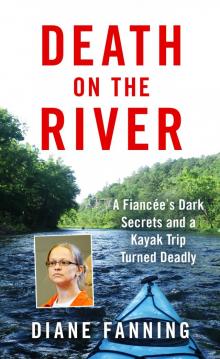 Death on the River
Death on the River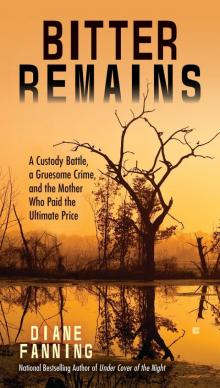 Bitter Remains
Bitter Remains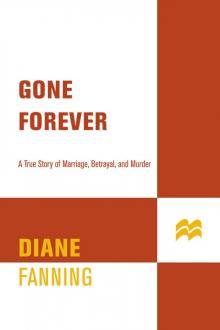 Gone Forever
Gone Forever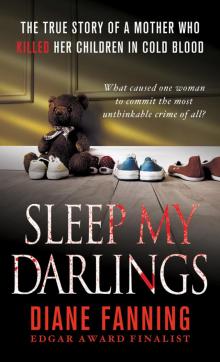 Sleep My Darlings
Sleep My Darlings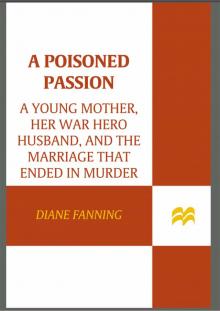 A Poisoned Passion
A Poisoned Passion Through the Window: The Terrifying True Story of Cross-Country Killer Tommy Lynn Sells (St. Martin's True Crime Library)
Through the Window: The Terrifying True Story of Cross-Country Killer Tommy Lynn Sells (St. Martin's True Crime Library) Chain Reaction
Chain Reaction Baby Be Mine
Baby Be Mine The Pastor's Wife
The Pastor's Wife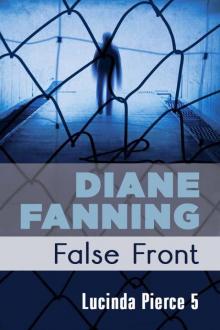 False Front (Lucinda Pierce)
False Front (Lucinda Pierce)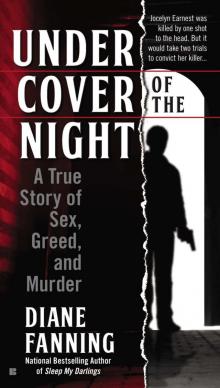 Under Cover of the Night
Under Cover of the Night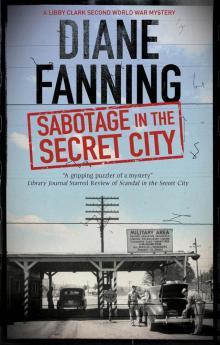 Sabotage in the Secret City
Sabotage in the Secret City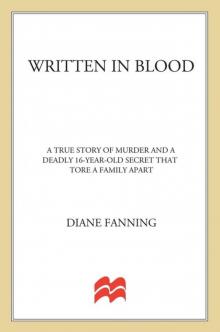 Written in Blood
Written in Blood Treason in the Secret City
Treason in the Secret City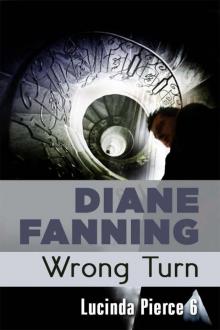 Wrong Turn
Wrong Turn Under the Knife
Under the Knife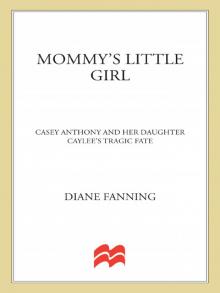 Mommy's Little Girl
Mommy's Little Girl Scandal in the Secret City
Scandal in the Secret City